Search
Did you mean: Constantine I?
Search Results
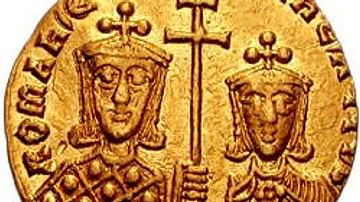
Image
Constantine VII & Romanos II
A gold Byzantine nomisma coin depicting Emperor Constantine VII (r. 945-959 CE) and his son and successor Romanos II (r. 959-963 CE).
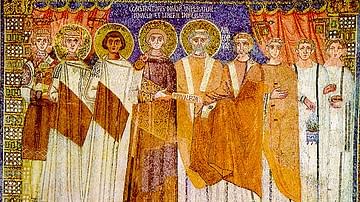
Image
Constantine IV
A 7th century CE mosaic depicting the Byzantine emperor Constantine IV (r. 668-685 CE) and entourage in the basilica of Sant'Apollinare, in Classe, Ravenna, Italy.

Definition
Constantinople
Built in the seventh century BCE, the ancient city of Byzantium proved to be a valuable city for both the Greeks and Romans. Because it lay on the European side of the Strait of Bosporus, the Emperor Constantine understood its strategic importance...
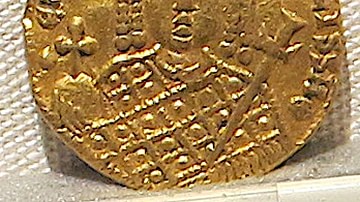
Definition
Empress Irene
Empress Irene was the wife of Leo IV and, on her husband's death, she reigned as regent for her son Constantine VI from 780 to 790 CE. From 797 to 802 CE she ruled as emperor in her own right, the first woman to do so in Byzantine history...
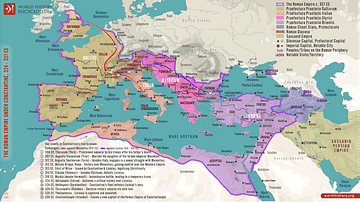
Image
Roman Empire under Constantine, 324-337 CE
This map illustrates Constantine I's (also known as Constantine the Great, c. 272-337 CE) rise to power, beginning with his proclamation as emperor by his troops in 306 CE and solidified through key military victories, including the Battle...
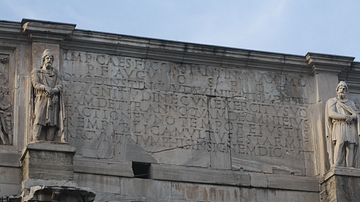
Image
Inscription, Arch of Constantine I
The inscription which appears on both sides of the Arch of Constantine I in Rome. Dedicated in 315 CE, the triumphal arch celebrates the emperor's victory over the Roman tyrant Maxentius in 312 CE. The inscription reads: IMP CAES FL CONSTANTINO...
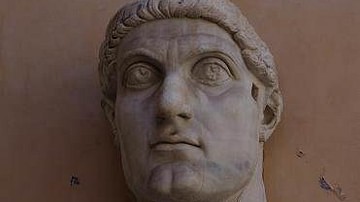
Image
The Colossus of Constantine
Once located in the west apse of the Basilica of Maxentius, fragments of the Colossus of Constantine are now located in the courtyard of the Palazzo dei Conservatori of the Musei Capitolini on the Capitoline Hill, Rome. Marble, 312 CE.
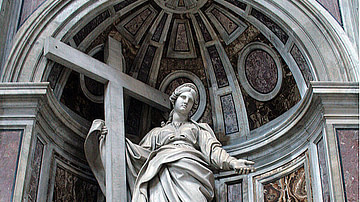
Definition
Helena of Constantinople
Saint Helena of Constantinople (248/250-328 CE) was the mother of Roman emperor Constantine I (r. 306-337 CE). She famously made a pilgrimage to Jerusalem where tradition claims found Christ's true cross and built the Basilica of the Holy...
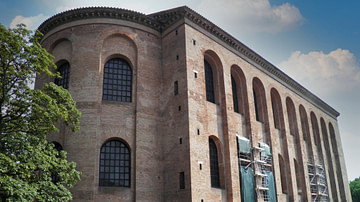
Image
Basilica of Constantine, Trier
The Basilica of Constantine (Aula Palatina) in Trier (Germany) was built around 310 CE by Constantine I (r. 306-337 CE) as the reception and throne room of the imperial palace . With an interior 67 metres (219 ft) long and 33 metres (108...
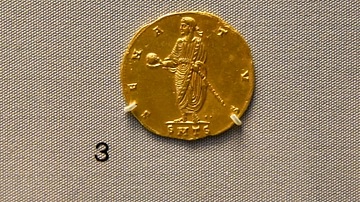
Image
Gold Medallion of Constantine the Great
Medallions with designs similar to coins could be worn as a symbol of allegiance, or given as prestigious gifts. They were specifically to be attractive, as display or presentation pieces. Gold medallion of the Roman Emperor Constantine I...